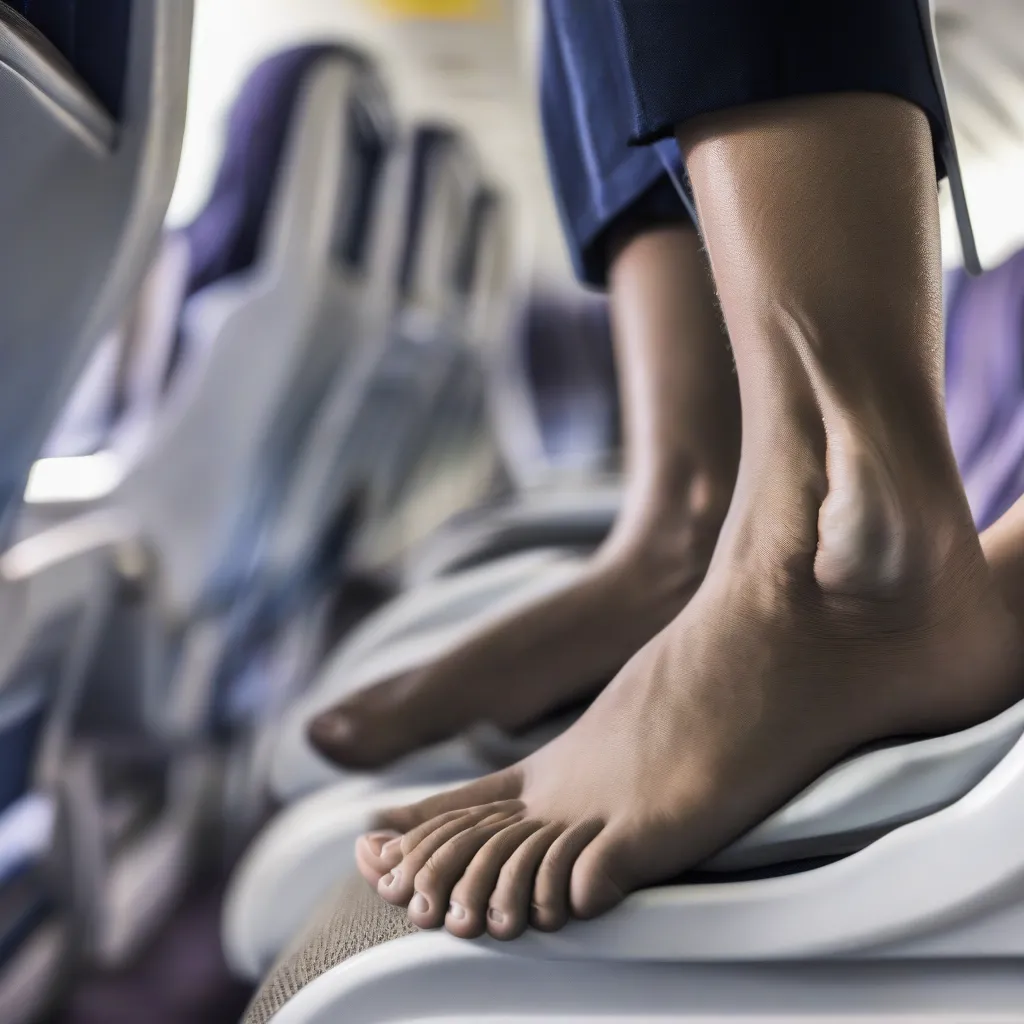Have you ever hopped off a long flight, eager to explore a new city, only to realize your feet feel like overstuffed sausages bursting out of their casings? You’re not alone! Swollen feet are a common travel woe, especially after long journeys.
But don’t worry, it’s usually harmless and temporary. Let’s unpack the reasons behind this puffy phenomenon and how to combat it.
Why Do Our Feet Turn Into Balloons Mid-Flight?
Imagine you’re on a scenic flight over the Grand Canyon. While you’re captivated by the view, the change in cabin pressure, prolonged sitting, and even dehydration can cause fluid to pool in your lower extremities.
Here’s a deeper dive:
- Gravity’s Got a Grip: When you sit for extended periods, gravity pulls fluid down to your feet and ankles, causing them to swell.
- Cabin Pressure Plays a Role: The low air pressure in airplane cabins can disrupt fluid balance, leading to swelling.
- Dehydration Doesn’t Help: If you’re not drinking enough water, especially on long flights, your body might retain fluids, contributing to swelling.
- Underlying Medical Conditions: Sometimes, swollen feet can signal an underlying medical condition like deep vein thrombosis (DVT) or heart problems. If you experience persistent or severe swelling, consult a doctor.
 Swollen feet on airplane
Swollen feet on airplane
Tips to Prevent and Reduce Swelling While Traveling
Don’t let swollen feet put a damper on your adventures! Try these simple tips:
1. Move It or Lose It!
- In-Flight Exercises: Every hour or so, try ankle rolls, foot pumps, and even short walks up and down the aisle to keep the blood flowing.
- Explore on Foot: Once you reach your destination, ditch the taxis and explore the city by foot. Walking is a great way to combat swelling and soak in the sights.
2. Stay Hydrated Like It’s a Desert Trek
- Water is Your Friend: Drink plenty of water before, during, and after your journey.
- Limit Alcohol and Caffeine: These beverages can dehydrate you, worsening swelling.
3. Compression: Your Feet’s Best Friend
- Compression Socks: These nifty socks apply gentle pressure to your legs, promoting circulation and reducing swelling.
 Traveler with compression socks
Traveler with compression socks
4. Elevate Those Weary Feet
- Prop Them Up: Whenever possible, elevate your feet on a pillow or footrest to encourage fluid drainage.
When to Seek Medical Attention
While mild swelling is usually harmless, it’s essential to know when to seek medical help:
- Sudden, Severe Swelling: Especially if it’s only in one leg, as it could be a sign of DVT.
- Swelling Accompanied by Pain, Redness, or Warmth: These symptoms could indicate an infection or other serious conditions.
FAQs – Your Swelling Concerns, Answered
Q: Can I wear sandals on a long flight?
A: While comfortable, sandals might not offer the best support for your feet, potentially worsening swelling. Opt for comfortable shoes that you can easily slip on and off.
Q: Are there any foods that can help with swelling?
A: Yes! Foods rich in potassium, like bananas and spinach, can help reduce water retention.
Q: I’m traveling to [Famous Landmark] soon. Any tips to avoid swollen feet?
A: Absolutely! For a smooth trip to [Famous Landmark], be sure to pack comfortable shoes, compression socks, and stay hydrated. Check out travelcar.edu.vn for more helpful travel tips.
Conclusion
Swollen feet are a common travel nuisance, but thankfully, usually preventable and manageable. By incorporating simple measures like staying hydrated, moving regularly, and using compression socks, you can keep your feet happy and ready for all the adventures that await you. Remember, TRAVELCAR.edu.vn is your go-to resource for all things travel-related. Happy exploring!
